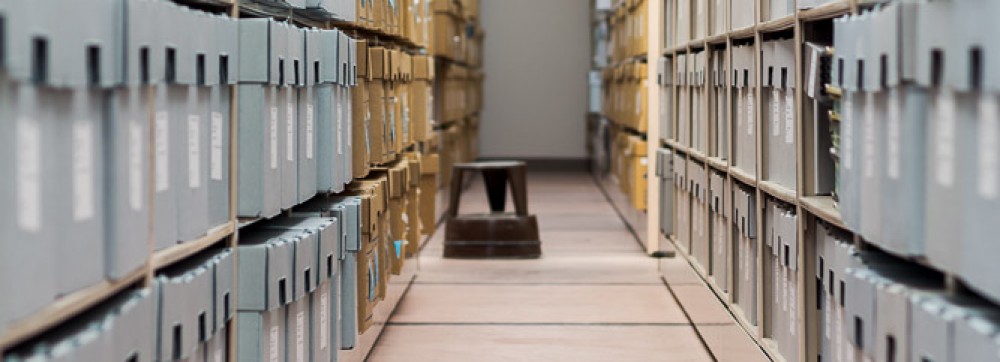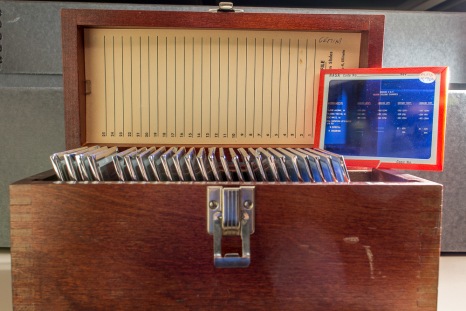Last year, for the anniversary of NASA’s founding (July 29th, 1958, if you’re curious), we wrote a few words about Dr. Sherman Vinograd and his papers here at the Southwest Collection. We love the collection so much that a couple of months ago we also installed an exhibit that will be on display until around January 2015. It details his career and many significant accomplishments. This turned out to be a timely installation, as the good Dr. passed away on September 1, 2014.
In case you didn’t check out the previous blog (and you should!), Dr. Sherman P. Vinograd served as NASA’s Director of Medical Science and Technology from the fall of 1961 until the spring of 1979. In those 18 years he led NASA’s most fruitful medical, engineering, and vehicle development research relating to manned space flight. Among his many accomplishments was the establishment of the In-flight Medical Experiments Program, which evaluated human responses to extended space flight. Its experiments focused on sensory deprivation, which in Dr. Vinograd’s words “inspired” some of his staff to hypothesize that astronauts would hallucinate “little green men” when deprived of all sight, sound, and hearing. Fortunately, no one ever came close to hallucinating, proving the resilience of the human mind and body.
As most folks know, on July 20, 1969, Neil Armstrong and Buzz Aldrin of the Apollo 11 mission became the first humans to walk on the moon. The years of medical research, planning, and engineering that led to this triumph began in part with the scientific efforts of Dr. Vinograd and his team. As you can see above, they devised an elaborate but compact Environmental Control System that efficiently regulated and recycled all oxygen, water, and sanitation on board the cramped lunar module. Look closely: they recycled everything. Everything. One way or the other, Apollo 11 made the Dr. “very, very happy,” and he also heaped praise on the “astronauts…and that support crew that they had” who did all the heavy lifting to make it possible. It was, he summarized, “the pinnacle accomplishment of the century.”
Another highlight of Dr. Vinograd’s career revolved around “Star City,” an area in Moscow Oblast, Russia, which since the 1960s is home to the Yuri Gagarin Cosmonaut Training Center (GCTC.) Named for the famed Russian who was the first human to journey into outer space, the GCTC saw years of collaboration between the U.S. and Russian scientists that ultimately resulted in 1975’s Apollo-Soyuz Test Project. That flight was not only the final Apollo and U.S. space mission until the arrival of the space shuttle, but also punctuated the end of the “space race” in which the two superpowers had been locked since 1957. It also resulted in awesome bi-lingual textbooks like the one above, of which we boast a complete set in both Russian and English!
Finally, one of the Dr.’s most impressive programs was the Integrated Medical and Behavioral Laboratory Measurement System (IMBLMS). Before lengthy space flights could occur, physicians had to determine if blood circulation, breathing, and even the ability to swallow food were affected adversely by zero gravity. The Mercury, Gemini, Apollo, and Skylab programs all relied heavily on IMBLMS’ experiments to ensure the safety of the astronauts.
To see all of Dr. Vinograd’s good stuff, check out his exhibit if you’re out our way in Lubbock, Texas. Or to see his papers in their entirety, don’t hesitate to contact our trusty Reference Staff! They’d also be happy to provide you with the papers of NASA Commander Rick Husband, leader of the ill-fated space shuttle Columbia mission. Husband, in fact, will be getting his own exhibit at the SWC in Spring 2015, which we encourage you to visit.








